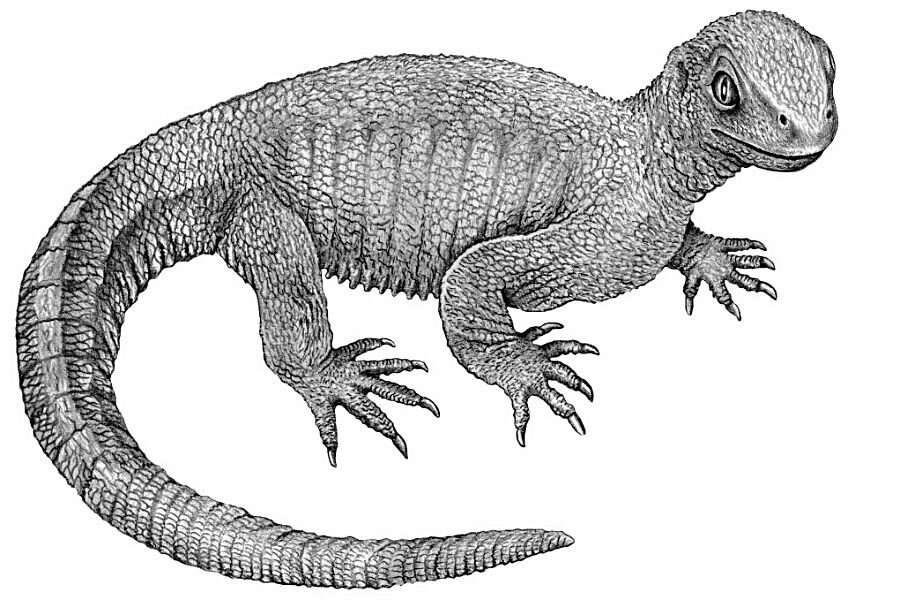How did the turtle get its shell?
Scientists have finally found the answer to a question that's been plaguing them for centuries: how did turtles get their shells?
An article published Wednesday in the journal Nature says the fossilized remains of a 240 million-year-old reptile, which scientists have named Pappochelys (Greek for "grandfather turtle"), have provided researchers with significant insight as to how turtles evolved. Prior to the recent discovery of Pappochelys, there was a gap between the oldest known turtle, 220 million-year-old Odontochelys from China, and 260 million-year-old Eunotosaurus from South Africa, which is thought to be its ancestor. Researchers say the fossil, which was uncovered in a limestone quarry near Stuttgart, Germany, provides the missing link between the two specimens.
Pappochelys does not closely resemble turtles as we know them today, as the first fully-shelled turtle didn't appear until about 214 million years ago. Instead, it has broad, sturdy ribs that fan out from its spine and a line of hard, shell-like bones along its belly.
"Early on, you first make broad ribs," Hans-Dieter Sues, a paleontologist with the Smithsonian's National Museum of Natural History, explains to NPR. "Then you build the belly shell. Then you complete the back shell. And then you have basically what's a modern turtle."
Mr. Sues, who co-authored the Nature report with Rainer R. Schoch from the Natural History Museum in Stuttgart, Germany, describes Pappochelys as being about 8 inches long (20 cm), with slender legs, a long tail and neck, and "a strange, boxy trunk region."
The fossil also has two openings in the skull behind the eye sockets, suggesting that turtles are closely related to the reptile lineage that produced lizards and snakes. This reveals a great deal about the turtle's origins, as researchers had previously believed that they evolved from a different group of now-extinct primitive reptiles.
Schoch says transitional creatures such as Pappochelys are "the most important contribution that paleontology can make to the study of evolution."
"They are often unexpected and show surprising features," he explained in an interview with Reuters. "They show how complicated structures like the skull or turtle shell formed step by step, and also give evidence on the sequence of evolutionary steps."
Now that the question of how turtle shells evolved has been taken care of, scientists can begin to grapple with the question of why.
"I think the classic idea has always been that the shell evolved for protection," Tyler Lyson, a curator at the Denver Museum of Nature and Science, tells NPR. However, he says, there's a catch: ribs play a vital role in breathing, so using ribs to create a shell meant that turtles were forced to come up with a new way to breathe. "Why lock up your ribs into a shell? No other animal does that."
But turtles have never been afraid of standing out from the crowd. Other animals have various forms of bony plates, Sues says, but turtles are the only creatures to be "completely enclosed – basically, in its own little bony house. That's something that's unique to turtles."






